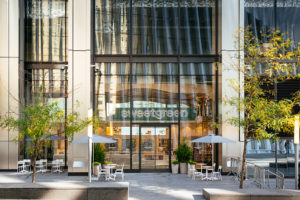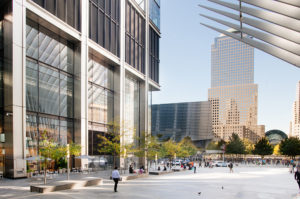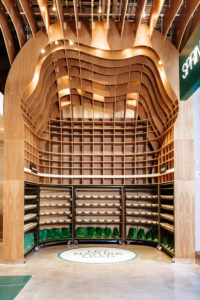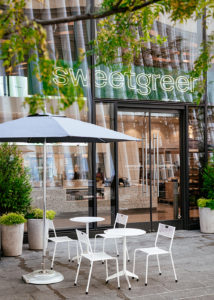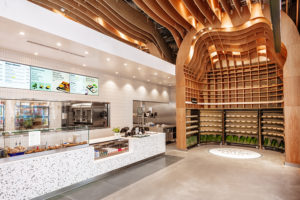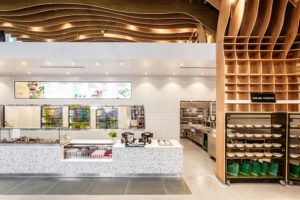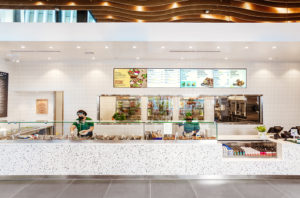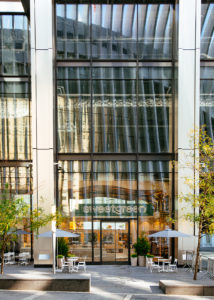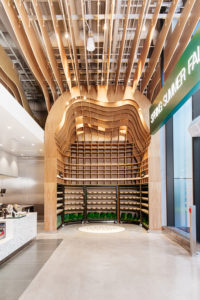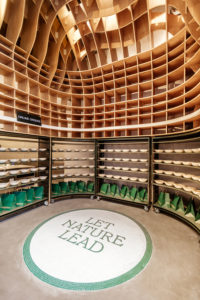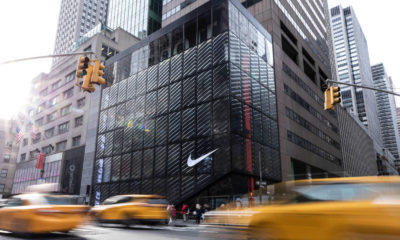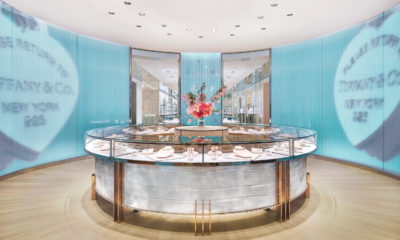THE SIT-DOWN RESTAURANT, fast-casual and QSR sectors continue to impress us with their adaptations to the rigors of the Covid era, through the incorporation of compelling app features, tackling sustainability through design and packaging, and evolving to provide self-pickup and delivery services.
Yum! Brands, Inspire Brands and Darden Restaurants, along with other small and regional chains, have been inspiring us with new approaches to the customer experience. Taco Bell is just one recent example of knocking it out of the ballpark with compelling exteriors and statement-making building shells.
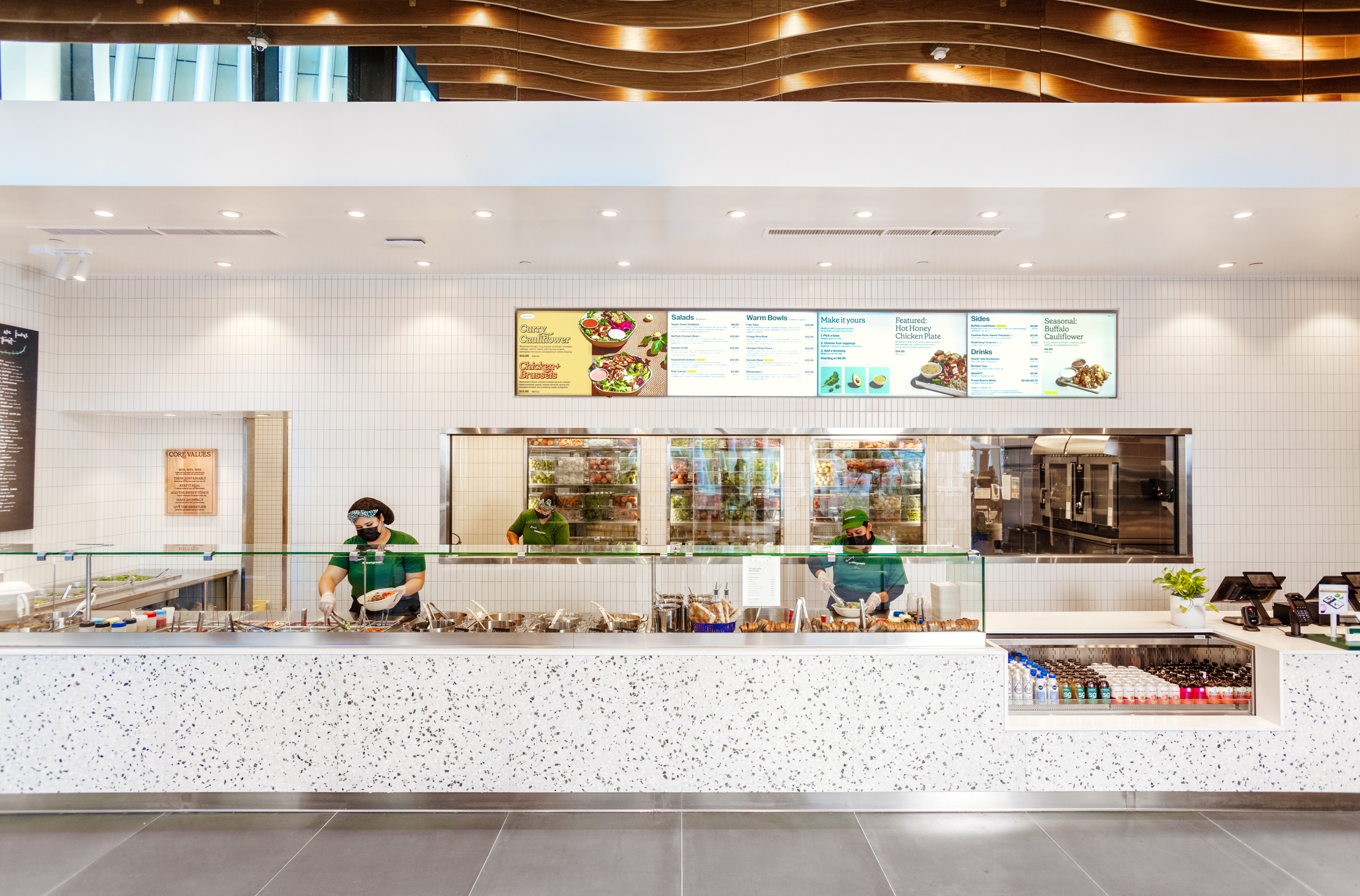
📷 Courtesy of Sweetgreen/DGC
We’re living in an era where there is a boom in food choices, covering just about every cuisine known to civilization. As I pointed out in my article about food courts in VMSD’s October 2022 issue, the huge network of restaurants throughout the world are feeding hundreds of millions every day, and it takes a lot to grab customer attention. It’s not just about the interiors and digital experiences, but the total brand experience, including the food itself.
If you want to understand the modern shopper, look no further than evolving trends. Plant-based selections are driving new chains and customer engagement in traditional food chains such as McDonalds and Mendocino Farms. Healthy options are outpacing other categories; we even see “salad-based” chains become commonplace in urban and suburban centers.
Sweetgreen continues to expand all over the U.S. and is offering quick, healthy options at affordable prices. The brand also goes beyond its reportedly sustainably sourced food by utilizing sustainable building practices. Speaking of design, Sweetgreen’s locations are beautifully minimalistic. I love the Scandinavian aesthetic and the mix of light, bright materials. They also just opened a digital kitchen that is for online and app pick-up orders only. (Mixt in the San Francisco Bay area is another prime example of a smaller group serving this same market well with similar interiors.)
Advertisement
Technology is playing a major role in the way we order, too. In June, I had the opportunity to go on a guided tour (at AIA’s A’22 conference in Chicago) with the team that created McDonald’s Chicago flagship location. I have to say the planning and requirements for this parcel are impressive. From the underground storage facilities to the required parking space, the building is a marvel of architectural design. Overall, the design supports customers getting their food in a timely manner.
Self-order kiosks are increasingly becoming commonplace, as well. With ongoing staffing issues impacting the service sector, this seems like an ideal placement of digital assets. When I used one recently, it felt slower than if I’d just blurted out my order at the counter, but it did something magic that otherwise would’ve been missed: It digitally presented me with imagery that frankly made me shift my order and purchase a strawberry milkshake that otherwise I would have foregone.
Advertisement
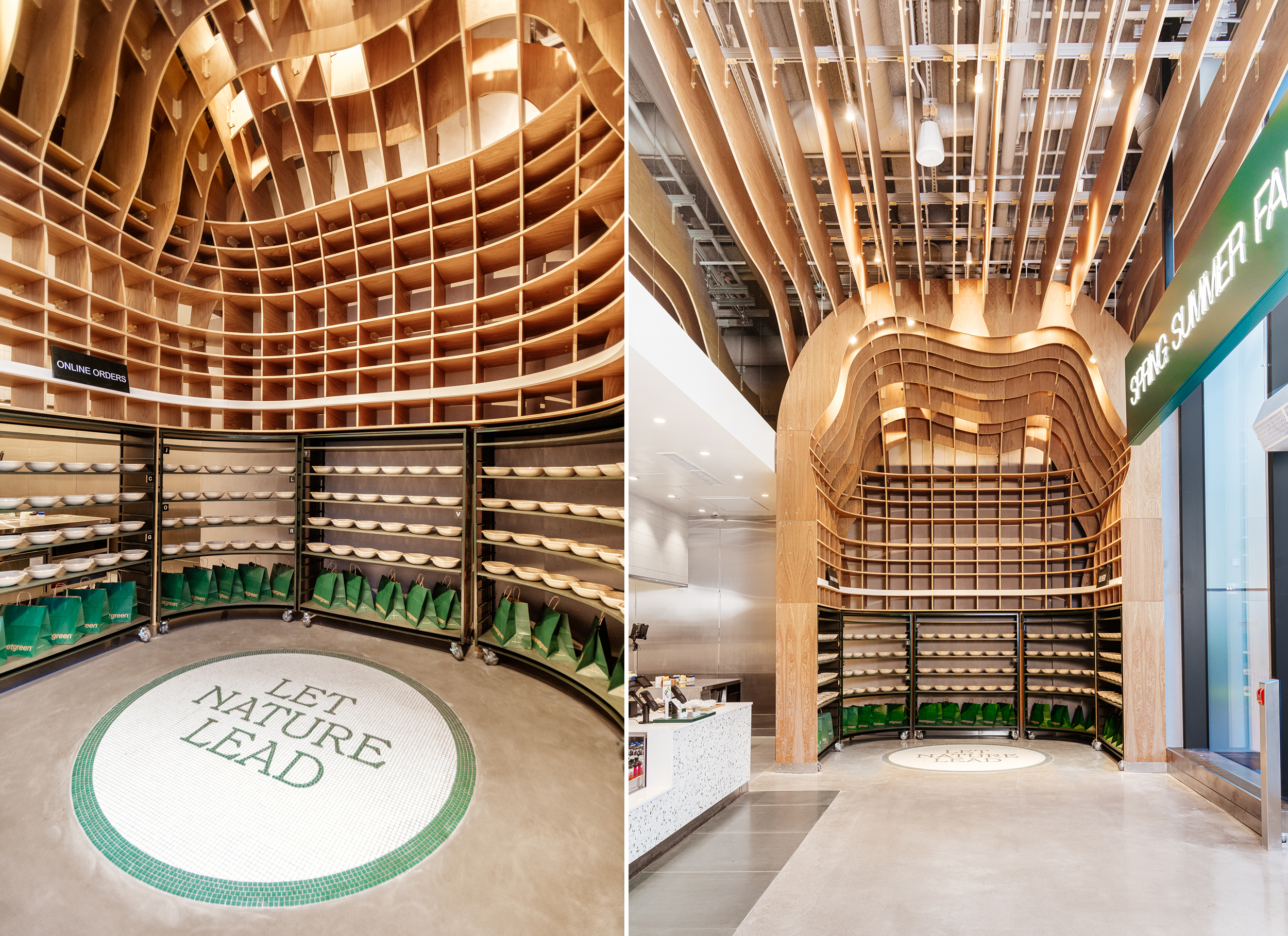
From a back-of-house perspective, the data gathering opportunities are tremendous and on par with any e-comm site. You can map out the order process and see what may have triggered a cancellation or, as I did, an added item. You could potentially use the data to make accurate predictions as to what products are selling at what rates, thus triggering supply chain replenishments much faster.
These kiosks are also a great way to beta test new items and to see what visually entices your customers. These systems are coupled with contactless payment systems that also simplify the need to handle cash. I see this happening more and more in store and we’ll see other segments adapt.
Beyond the in-store experience, food packaging is yet another area where we’ll see innovations continue. It’s common for consumers to throw away packaging after using or consuming the product, and regardless of the material used, this habit can harm the environment as certain packaging materials can threaten wildlife and pose risks to human health.
Advertisement
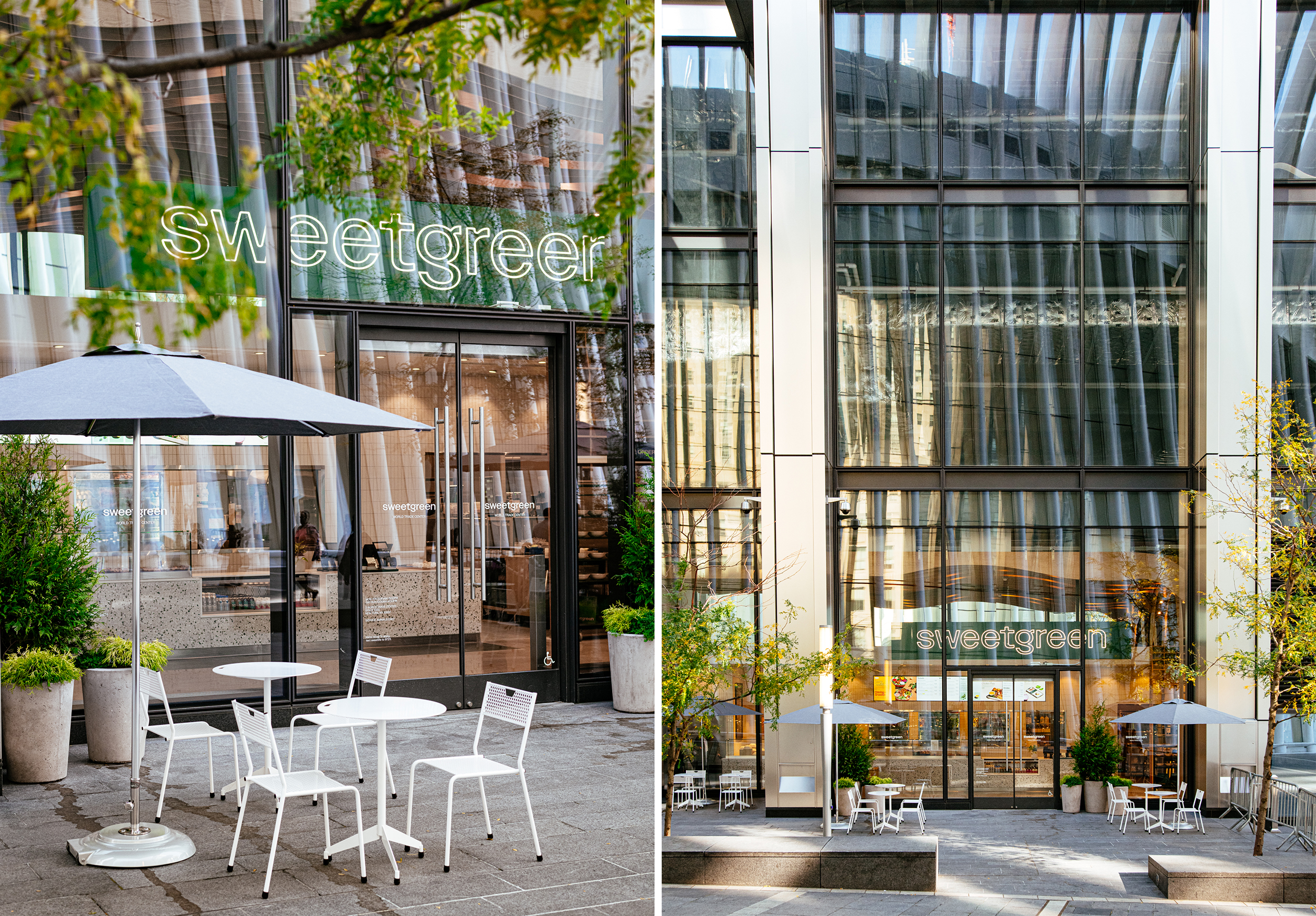
In 2022, the popularity of biodegradable or compostable packaging was expected to increase, with one of the most common examples being plantable seed paper boxes. This type of packaging will produce beautiful plants when discarded into soils and gardens.
Here are a few alternatives to plastic packaging we’re beginning to see at retail:
- Glass containers: Reusable, recyclable and durable material that’s also easy to clean and use as transportable food packaging. Glass food and drink containers include water bottles and bento boxes.
- Bamboo: Bamboo is biodegradable and possesses many desirable traits for food packaging, being durable and heat resistant.
- Rice husk: A byproduct of rice farming that’s low-cost, renewable and biodegradable. One study has shown that rice husk possesses bio-adsorbent properties, which means that it absorbs pollutants from its surrounding environment. Products made from this compound include sealable lunch boxes and shatterproof serving bowls.
Advertisement
Finally, flexible/modular spaces will become a hallmark in restaurants and QSR design. This means that as diners seek to be outside or even in their cars instead of dining rooms, you’ll see interiors take on a more meaningful and event-driven tone. Why can’t meet-ups and other civic networking events find a new home in the sit-down and QSR worlds? Look for furniture to be movable and for some restaurants to style interiors with business flows and booked events in mind.
Next UX is always about evolution and refinement. I look forward to more dining experiences that align with my taste and yearn to have meaningful experiences, even if I’m only spending $15.
PHOTO GALLERY (11 IMAGES)
📷 Courtesy of Sweetgreen/DGC
Advertisement
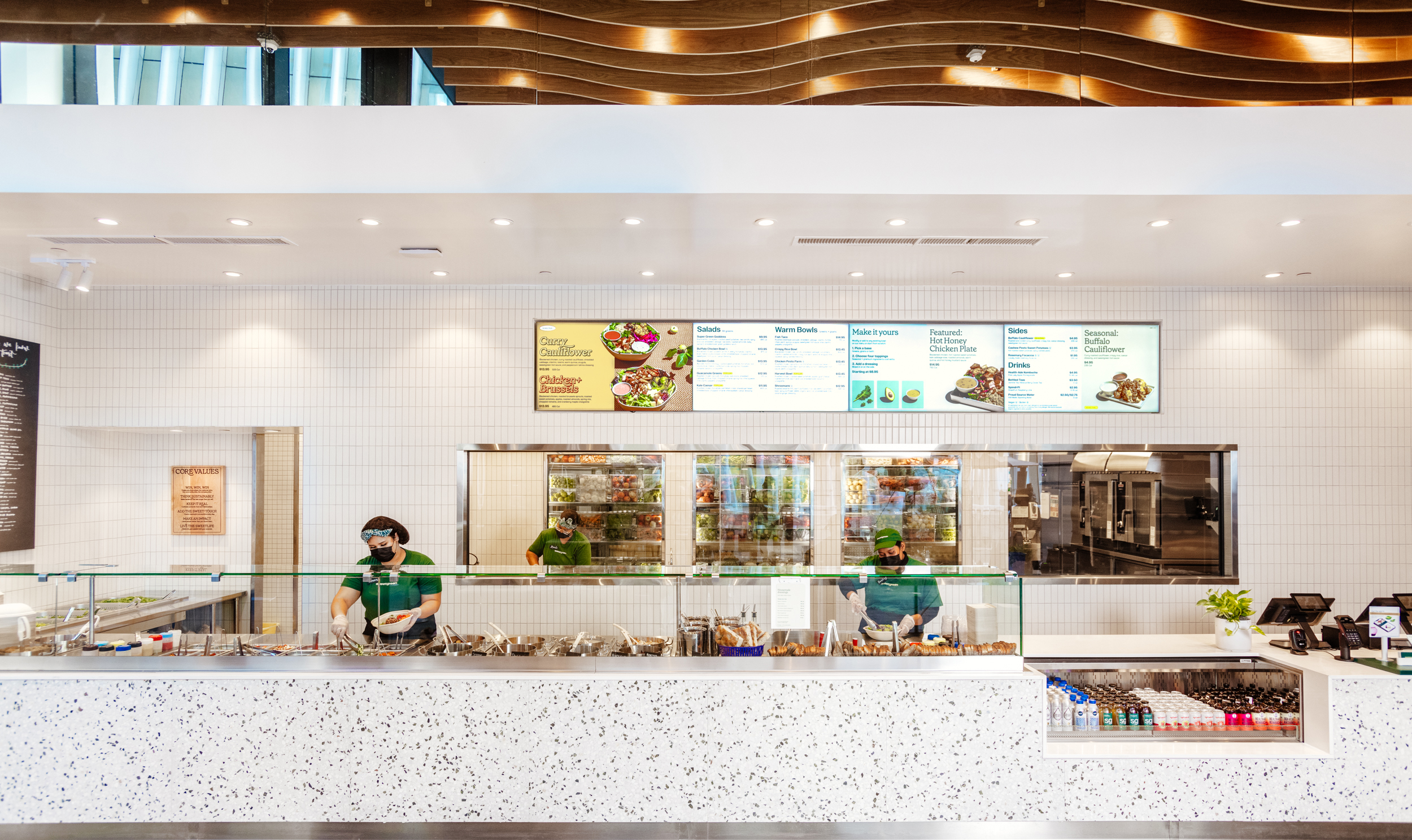

 Photo Gallery2 days ago
Photo Gallery2 days ago
 Headlines1 week ago
Headlines1 week ago
 Headlines2 weeks ago
Headlines2 weeks ago
 Sector Spotlight2 weeks ago
Sector Spotlight2 weeks ago
 Headlines1 week ago
Headlines1 week ago
 Headlines4 days ago
Headlines4 days ago
 Headlines2 weeks ago
Headlines2 weeks ago
 Designer Dozen1 week ago
Designer Dozen1 week ago



